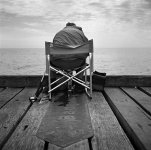jaffa_777
Established
Is it just me or is scanning print film really hard. The scans in terms of grain and sharpness are fine, but it's just the colours. The colours seem to need a lot of correcting in photoshop or in the scanning software, and there seems to be a million different ways and outcomes. Especially with silverfast, this is one comprehensive program that has just too many options.
I have worked on this photo most of tonight to get it where it is now. Its taken on Portra 160NC. If I tried to get all the ones in the series all looking the same in terms of colour consistency, I might be up for a while.
How do you guys tackle this?
Thanks people.

I have worked on this photo most of tonight to get it where it is now. Its taken on Portra 160NC. If I tried to get all the ones in the series all looking the same in terms of colour consistency, I might be up for a while.
How do you guys tackle this?
Thanks people.



